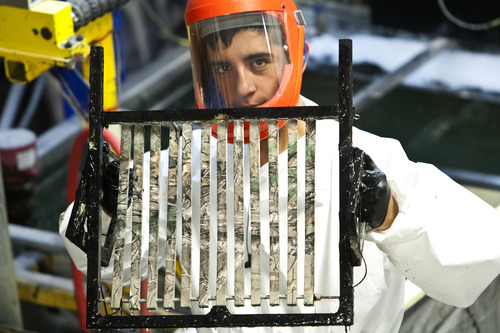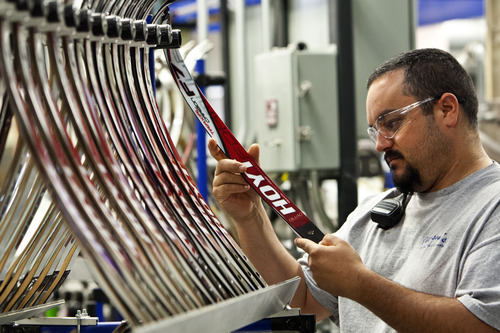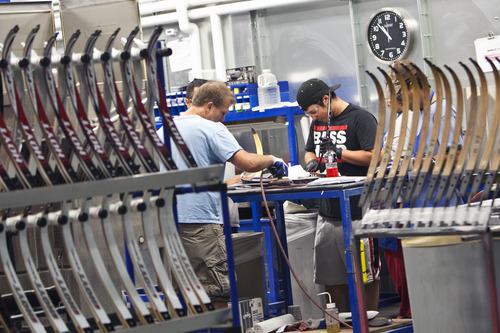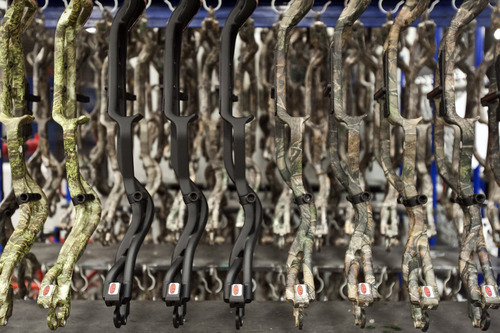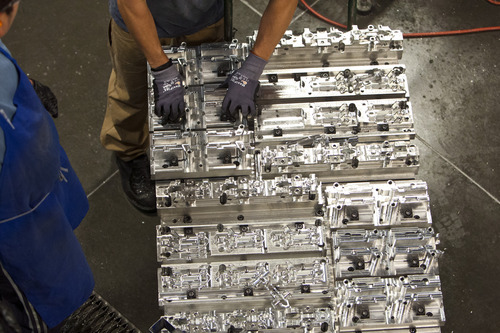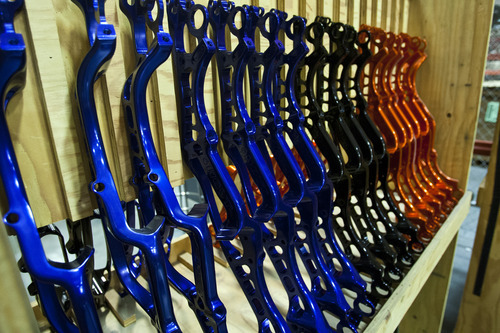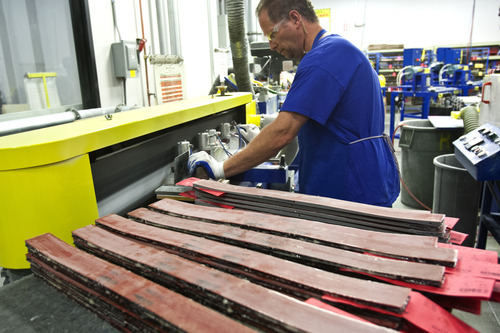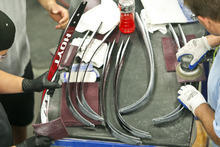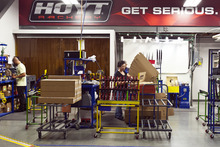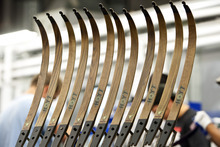This is an archived article that was published on sltrib.com in 2012, and information in the article may be outdated. It is provided only for personal research purposes and may not be reprinted.
Salt Lake City-based bow maker Hoyt Archery has been having tremendous success this year thanks to an unlikely spokeswoman and ambassador — a spry 16-year-old girl named Katniss Evergreen who competed in "The Hunger Games."
Popularity in the ancient sport of archery has exploded because of that blockbuster movie and other hit films that include "The Avengers," with its arrow-slinging hero Hawkeye and Pixar's animated tale, "Brave," about a Scottish girl who is a prized archer. Adding to the attention was the first U.S. broadcast of an Olympics archery competition, at the 2012 London Games.
As a result, times are good at Hoyt.
"We're going to have the biggest year ever in the history of [the company] from a financial standpoint," said Mike Luper, vice president of sales and marketing.
Luper would not reveal actual figures because Hoyt is privately held, but he said sales of its bows specifically for youth have increased about 200 percent this year thanks to young fans who have seen the movies or read the "Hunger Games" books.. That rise has spilled over to the adult bows, too.
"It's been phenomenal," he said. "Our youth-bow categories are off the charts in terms of sales."
More broadly adds Denise Parker, the Olympics archer from Utah who at 14 won a bronze medal at the 1988 Seoul Games and today is CEO of USA Archery, "It has definitely been a summer to remember for the archery world. It's been crazy. Everyone has all of a sudden wanted to shoot archery."
The rise in popularity has been reflected "not only in the domestic market but in the international market, too," said Douglas Denton, a Hoyt product engineer who designs the bows. "It truly is global."
That has led to a good problem to have. When it comes to production, "we just can't keep up," Luper said.
In the past year, the 81-year-old company moved into a 150,000-square-foot building on the north end of the Salt Lake International Center that's nearly double the size of its previous facility. Most of the company's 200 to 250 employees work at the production plant, carving, painting and constructing each bow by hand with the help of specialized machines designed by Hoyt's engineers.
Hoyt designs and produces two types of archery bows — compound models used by hunters and youths that have a series of wheels and pulleys, and "recurve" models used by Olympians that are so named because of the curved "limbs" that extend from the center.
The recurve bow is usually made up of three main components, the limbs, the center handle called a "riser" and the string, while the compound bow also includes a pulley system to lessen the holding weight of the string.
The limbs on a recurve bow, which have to be flexible but durable, are made of "syntactic foam" consisting of tiny glass balls and a carbon material. The limbs on a compound bow are made of high-performance glass and carbon materials. The risers are made of either aluminum or a proprietary carbon construction, and the bow string is made of a synthetic material. Typically, a men's competition bow will take 50 pounds to 53 pounds of pull to bring the string back, while the women's bow has 36- to 43-pound pull.
Workers will carve the riser from a solid piece of aluminum, while the limbs are made from a lamination process. The parts are then polished by hand and painted or covered with camouflage through a procedure that liquifies the print before it is applied to the bow. Each bow is made to precise specifications and tested before it's shipped to pro archery shops worldwide. Hoyt bows are not sold in big-box sporting goods stores such as Cabella's because Hoyt requires trained retailers to set them up for the customer.
The company produces 35 different bows, including eight for youths, ranging from $99 up to around $2,000 for an Olympic-quality version that includes three additional stabilizer bars to help keep it steady.
"Why are there so many different golf clubs or running shoes?" said product engineer Denton, explaining why Hoyt make so many different models. "Because everyone is built differently."
The company started in 1931 when Earl Hoyt Sr. and his son made cedar arrows by hand and then wooden bows. In 1983, Hoyt was purchased by sporting goods equipment manufacturer Jas D. Easton Inc., which recently moved its headquarters to Salt Lake City from Van Nuys, Calif. Easton also makes arrows made of aluminum and carbon fiber. They can range in price from $79 to $600 per dozen.
Luper said there are more than 40 different bow manufacturers worldwide, but Hoyt is considered one of the best in the industry. Every one of the gold medalists in individual archery at this summer's London Games used a Hoyt bow, he added.
"Hoyt has led for many years and is right at the top for the quality of its bows," said former Olympian Parker, who lives in Ogden. "They're almost in a class by themselves."
Hollywood has not only helped inspire new Hoyt customers, it also has benefitted from the company's designs. The producers of "The Avengers" used Hoyt's Buffalo recurve bow for the movie's superhero character Hawkeye (played by Jeremy Renner). The makers of the upcoming "Hunger Games" sequel, "Catching Fire," also just chose Hoyt's Buffalo model for the Katniss Evergreen character (played by Jennifer Lawrence). Years ago, a Hoyt compound bow was used by Sylvester Stallone's iconic action character, John Rambo, in "Rambo: First Blood II." That model, which no longer is available, was called "The Rambo."
With the release of more "Hunger Games" sequels and the premiere of this fall's CW television show "The Arrow," an adaptation of the Green Arrow comic, the people behind Hoyt hope the nation's fascination with archery continues to fly straight and true.
"We're just on the front edge of it," Luper said of the trend. "Only time will tell. The only hope is that there is some longevity to it."
Google+: +Vincent Horiuchi



